#Maria Rossetti
Explore tagged Tumblr posts
Text
Poet and Painter
Until 24th September 2023, Tate Britain is hosting an exhibition about the radical Rossetti family, focusing on their attitudes to art, love and lifestyles. Arguably, Dante Gabriel Rosetti is the most famous of the siblings, and his paintings make The Rossettis a remarkable exhibition. It has been over twenty years since Rossetti’s artwork has been on display in retrospective fashion, and it is a…
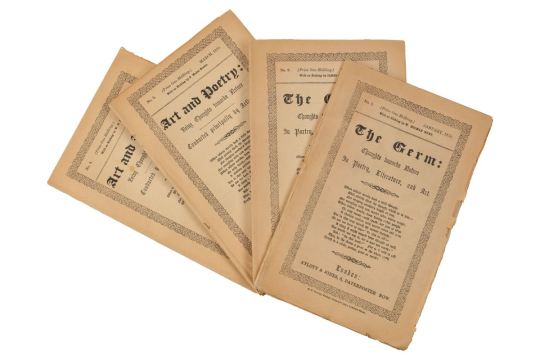
View On WordPress
#alcoholic#Alexa Wilding#art#Beata Beatrix#Bight&039;s disease#Bocca Baciata#Christina Rossetti#Dante Gabriel Rossetti#Ecce ancilla domini#Elizabeth Siddal#Exhibition#Fanny Cornforth#Ford Madox Brown#Jane Burden#ko-fi#Maria Rossetti#mental health#patreon#poem#poetry#Pre-Raphaelite Brotherhood#Rossetti#tate britain#the annunciation#The blessed damozel#the rossettis#William Holman hunt#William Morris#William ROssetti
1 note
·
View note
Text







it is spring again.
#spring#spring equinox#queue#quotes#original post#spilled ink#poetry#rainer maria rilke#pablo neruda#christina rossetti#flowers#webweaving#spilled words#writing
47 notes
·
View notes
Text
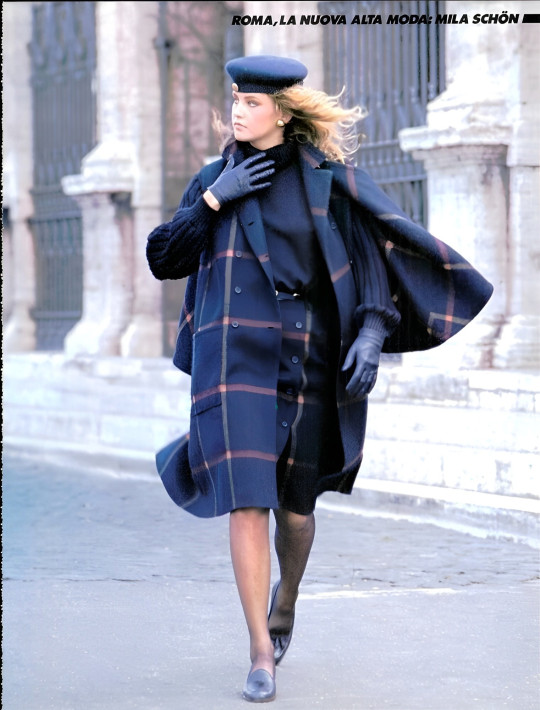
Vogue Italia September 1982
Lisa Ryall wears a plaid wool coat with removable cape, in Boggio Casero-Lucchini wool. Tight skirt in the same cashmere fabric and sweater with electronic collar. English rib sleeves. By Mila Schön. Sailor hat by Maria Volpi. Moccasins from the Rossetti brothers.
Lisa Ryall porte un manteau en laine à carreaux avec cape amovible, en laine Boggio Casero-Lucchini. Jupe moulante de même tissu cachemire et pull avec col électronique. Manches en côtes anglaises. Par Mila Schön. Chapeau de marin par Maria Volpi. Mocassins des frères Rossetti.
Photo Renato Grignaschi archivio.vogue.it
#vogue italia#september 1982#fashion 80s#italian designer#italian style#alta moda#mila schön#rossetti#maria volpi#casero-lucchini#lisa ryall#renato grignaschi
29 notes
·
View notes
Text

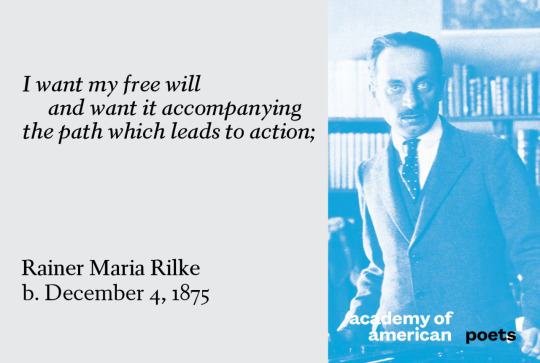

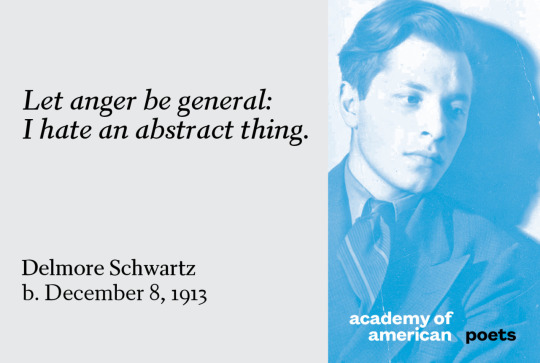
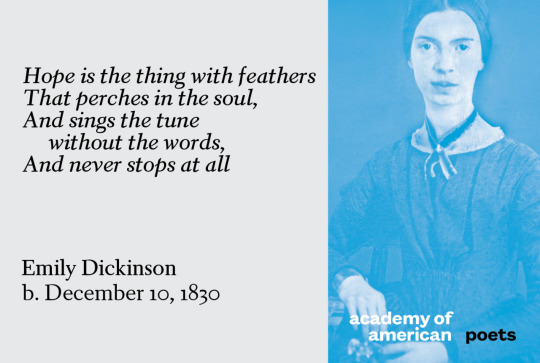

Escritores y poetas
#escritores#poetas#citas#emily dickinson#lola ridge#delmore schwartz#christina rossetti#rudyard kipling#rainer maria rilke
10 notes
·
View notes
Text
John Irving Poem Playlist
I love the hype around Davechella and wanted to do something a little different- a mixtape of poems, with commentary (desperate self-justification) and bonus poems below the cut
I.
The Lamb, William Blake
The Pilgrim, Sophie Jewett
Self-Dependence, Matthew Arnold
The Light of Stars, Henry Wadsworth Longfellow
The Wanderer, Unknown, trans. Roy M. Liuzza
Up-Hill, Christina Rosetti
Sir Galahad, Alfred Tennyson
II.
They Could Not Tell Me Who Should Be My Lord, Edwin Muir
God gave a Loaf to every Bird, Emily Dickinson
Ancient Text, Louise Glück
I Find no Peace, Thomas Wyatt
A Secret Told, Emily Dickinson
Mary Magdalen, James Elroy Flecker
Because I Liked You Better, AE Housman
III.
A Better Resurrection, Christina Rossetti
The Temptation of Saint Anthony, Rainer Maria Rilke, trans. Leonard Cottrell OR trans. Len Krisak
Batter my heart, three-personed God, John Donne
At Least to Pray, Is Left, Is Left, Emily Dickinson
'Thou art indeed just, Lord, if I contend", Gerard Manley Hopkins
The Rubaiyat of Omar Khayyam, (LXXXIV- LXXXVI) trans. Edward FitzGerald
I Shall Know why- when Time is over, Emily Dickinson
IV.
Sudden Hymn in Winter, Joseph Fasano
Fable and Decade, Louise Glück
Love (III), George Herbert
Of Molluscs, Mary Sarton
Dark Night of Soul, Juan de la Cruz, trans. E Allison Peers
He Touched Me, So I Live to Know, Emily Dickinson
The Finder Found, Edwin Muir
V.
The Plate, Anthony Hecht
Prospice, Robert Browning
Pietà, Rainer Maria Rilke, trans. Jessie Lemont
DEATH THE COPPERPLATE PRINTER, Anthony Hecht
The Gold Lily, Louise Glück
Futility, Wilfred Owen
Flock, Billy Collins
"What, no Wild Geese?" spiritually Wild Geese is here, tucked in section IV, which might a well be subtitled "The soft animal gets a treat", same with Song of Songs and so many psalms I couldn't pick one. I wanted to try to play with poems that were either new to me or a little further off the beaten track (although there are still some obvious picks but come on was I not going to get some Donne in there?). Frankly, this entire list could have been Emily Dickinson start to finish, it's not yet accepted historical fact that she was an inexplicable psychic witness to the sufferings of the Franklin Expedition but I am submitting my findings to journals as we speak
(sorry Jirv for all the Catholics and extremely suspect Anglicans!!)
I. SEEKING
Whenever I invoke "The Lamb" please know I am reading it with the same menace and sense of foreboding as Patti Smith. Given the vibe I'm trying to cultivate you'd think there would be more Blake, but I think Jirv has such a profoundly different experience with Church Authority and his own conversion experience that he and Blake hardly seem like they share the same faith. Even in a scenario where he managed to unclench, I can't see him espousing a sentiment like The Garden of Love. Maybe if he survived to reflect on his encounter with Koveyook he might groove more with "[Christ] is the only God ... and so am I and so are you."
The only section that has at least a few poets I think Jirv would actually read, namely Matthew Arnold-- the only poem on here that I think isn't very good, I'm sorry to Mr. Arnold but there we are, they were right to light your ass up in Punch. He's here however because I think his work captures a very clear and immediately accessible sense of the early Victorian man striving to be himself, in the sense that he can flower fully into the model of upstanding sober bourgeois middle-class manhood which isn't always attainable for later birth-order sons in a navy overcrowded with officers. The real life Irving's letters touched me very much in that he is both looking for a deeper connection with God, a better version for himself, and in the material world, a way to make enough money to establish himself as capital-R Respectable in a way that swashbuckling at sea or derring-do in the colonies doesn't really allow him. I actually don't know if the years line up for him to have read Longfellow but this stanza:
O fear not in a world like this, And thou shalt know erelong, Know how sublime a thing it is To suffer and be strong.
Is such a classic mid 19th century "making yourself miserable for ideological reasons" motto. Shades of "Invictus" (which for some reason I don't know if Jirv would vibe with, maybe more of a Crozier poem).
I think you could also call the first section "Voyages", I was struck by how often the real Irving was compelled to relocated to try and make a place for himself in the world in the literal, material sense, and the few letters we have are largely his thoughts on his spiritual seeking-- I was very surprised not to find a settled and secured ticket-to-Heaven holder but someone who still considers himself a student, is still wrestling and grasping and looking for something.
Prithee, Pilgrim, go not hence; Clear thy brow, and white thy hand, What shouldst thou with penitence? Wherefore seek to Holy Land? Stern the whisper on his lip: Sin and shame are in my scrip.
It feels a little much to say 'Jirv is the Galahad of their doomed Grail quest' but frankly, given that no one succeeds, I kind of like the idea of a failed Galahad. It's slightly ahistorical to invoke but once we get into the 1860s and the mid-Victorian chivalric revival Galahad becomes a potent symbol for a kind of chaste imperial knighthood in service to God/Queen/Country. At least one young office who died in WWI was named Galahad, not just a PG Wodehouse joke christening.
II. CRISIS
Obviously there are ten thousand things that could torment the evangelical protestant mind and bedevil one's self-worth and it doesn't have to be "hopelessly in love with your best friend" but I wasn't going to miss a chance for some Housman, was i? Wyatt gives us the money couplet:
I desire to perish, and yet I ask health. I love another, and thus I hate myself.
I had included Flecker's We That Were Friends but felt it was just slightly too self-aware, ditto Rosetti's Winter: My Secret.
III. STRIFE
I think these are all pretty self-explanatory. I could have added ten more Emily Dickinson poems because she is the only one on this earth who gets it (me, the deal, the whole of existence). Hopkins I think is more concerned with the sins of the world than the real life Irving (who, based on the very limited material shared, must be the most laid-back and chill evangelical in human history? Or maybe I spent too long among the Baptists) but I can see Jirv wondering, in the God-proof bunker of his diary, why the wicked are flourishing while he is losing his everloving mind and threatening to lock up ABs for being afraid of ghosts.
Here is the excerpted Khayyam so you don't have to go looking (although you should because its wall to wall bangers) (context: the narrator is standing in a potter's shed, and listening to the vessels talk amongst themselves)
LXXXIV. Said one among them— "Surely not in vain My substance of the common Earth was ta'en And to this Figure molded, to be broke, Or trampled back to shapeless Earth again." LXXXV. Then said a Second—"Ne'er a peevish Boy Would break the Bowl from which he drank in joy; And He that with his hand the Vessel made Will surely not in after Wrath destroy." LXXXVI. After a momentary silence spake Some Vessel of a more ungainly Make; "They sneer at me for leaning all awry: What! did the Hand then of the Potter shake?"
"Did you make me just to smash me, God?"
Runners-up for this section included Rossetti's The Three Enemies, which only didn't make the cut because I think its slightly uneven compared to the rest of this work and this list has become pretty Rossetti-heavy. Ditto De Profundis.
IV. ACCEPTANCE
Also pretty self-explanatory. Mystical union with Christ or a very special sergeant of the marines, or both! Is it canon? No! But I like to think that even just one time...
If you read any poem on this list please read 'Love (III)' and 'The Finder Found', the latter of which is my 'Wild Geese'. It seems self-serving to say I cried when I read it but I did. Meanwhile Herbert is goated and his entire work could be listed here but hearing Love (III) read aloud made me understand what poems could do.
I cheated putting two Glück poems for one but given that they were published together in that magazine I think its ok. Here's even more cheating: The Undertaking would be in there if I could squeeze it on the same line. "The darkness lifts, imagine, in your lifetime" PLEASE
Runners-up here were Larkin's First Sight, which just doesn't quite fit but I love for the sense of spring coming to someone who doesn't know there's anything other than winter deprivation, and A Shropshire Lad XI (On your midnight pallet lying) which I LOVE but again doesn't quite jive with the theme, but I do imagine it as a bridge poem between this section and the last...
V. DOOM
A little bit of Browning, who might squeak in under the line of plausibility (though perhaps not this poem) as Jirv sets out on the death march with waning faith that is not, in fact, a death march but then his journey ends in Stabtown, population: YOU. "The Plate" in this case would be that faith and knowledge of being loved that remains even after hardship and the final lost battle, maybe even literally in the meat from his stomach. But misery and death put all the men on the rack and instead of salvation they are essentially tortured to death, often long enough to crush/squeeze out any semblance of humanity and leaving the animal capacity for violence.
"Futility" could encompass the whole sorry venture but in specific the shot of Jirv's body after all the effort to make contact with someone would could help. Was it for this? "Exposure" also a strong contender for "the long slow process of freezing to death for unclear reasons".
"Flock" of course-- God needs martyrs.
#I'm not pretentious enough to call it an anthology but I suppose technically....#anyways. I've been collecting poems since October and this seems like the idea circumstance to set this post free#john irving#davechella#yes its long. eat your vegetables.#there could be more of everything really#more Rilke#ten thousand times more Dickinson#the terror
25 notes
·
View notes
Text










mary magdalene by various artists, 1600-present. (details below)
(simon vouet, saint mary magdalen, 1630. // guido reni, the penitent magdalene, 1635. // josefa d'óbidos, saint mary magdalene, 1650. // francesco hayez, repentant mary magdalene, 1825. // władysław niewiarowicz, the repentant st. mary magdalene, 1842. // dante gabriel rossetti, mary magdalene, 1877. // artemisia gentileschi, mary magdalene in ecstasy, 1620-25. // paul troger, the penitent mary magdalene, 18th century. // georges de la tour, the penitent magdalen, 1640. // archimede bresciani da gazoldo, santa maria maddalena, 20th century.)
#art history#mary magdalene#religious art#baroque#pre-raphaelite#simon vouet#italian art#spanish art#french art#guido reni#francesco hayez#dante gabriel rossetti#artemisia gentileschi#georges de la tour#txt
30 notes
·
View notes
Text






















taylor swift lyrics x colors x textiles in art – red
Fifteen – Fearless // Augusta of Bavaria with Her Children – Andrea Appiani ❤️ Love Story – Fearless // Portrait of a Prussian Prince – Unknown Artist ❤️ Red – Red // Apples – Kuzma Petrov-Vodkin ❤️ All Too Well – Red // Birdsong – Károly Ferenczy ❤️ All Too Well – Red // Portrait of a Lady – John Opie ❤️ The Moment I Knew – Red // Portrait of Sophia Hedwig of Brunswick-Lüneburg – attributed to Wybrand de Geest ❤️ Nothing New – Red // Sibylla Palmifera – Dante Gabriel Rossetti ❤️ Blank Space – 1989 // Tomaž Hren – unknown artist ❤️ Style – 1989 // Ernest Amadej Tomaž Attems – unknown artist ❤️ Wildest Dreams – 1989 // A Vision of Fiametta – Dante Gabriel Rossetti ❤️ New Romantics – 1989 // Portrait of Armand Gaston Maximilien de Rohan – Hyacinthe Rigaud ❤️ End Game – Reputation // A Genoese Lady with Her Child – Anthony van Dyck ❤️ I Did Something Bad – Reputation // Marie-Adélaïde de France – Johann Julius Heinsius ❤️ Look What You Made Me Do – Reputation // Infanta Isabel of Spain – Carlos Luis de Ribera y Fieve ❤️ Daylight – Lover // Self-Portrait – Gwen John ❤️ the lakes – folklore // Maria Amalia of Saxony – Anton Raphael Mengs ❤️ gold rush – evermore // Barine – Edward Poynter ❤️ Maroon – Midnights // Margaret “Peg” Woffington – unknown artist ❤️ Maroon – Midnights // Portrait of Marchessa Marianna Florenzi – Joseph Karl Stieler ❤️ Maroon – Midnights // Henry IV, King of France in Armor – Frans Pourbus the Younger ❤️ Maroon – Midnights // Elizabeth I as a Princess – attributed to William Scrots ❤️ The Great War – Midnights // Augusta, Duchess of Cambridge with Her Children – Melchior Gommar Tieleman
#fearless#fearless taylor swift#red#red taylor swift#red taylor’s version#1989#1989 taylor swift#reputation#reputation taylor swift#lover album#lover taylor swift#folklore#folklore album#folklore taylor swift#folklore ts#evermore taylor swift#evermore ts#evermore#evermore album#midnights#midnights album#taylor swift midnights#midnights taylor swift#taylor swift#long post#taylor swift lyrics x colors x textiles in art
141 notes
·
View notes
Text

Maria Stillman, née Spartali, Dante Gabriel Rossetti, 19th century
Black chalk on pale blue-green paper 19 ¼ x 14 in. (48.9 x 35.6 cm)
#art#dante gabriel rossetti#drawing#pre raphaelite brotherhood#pre raphaelite#works on paper#19th century#19th century art#portrait#english#british#chalk
14 notes
·
View notes
Text
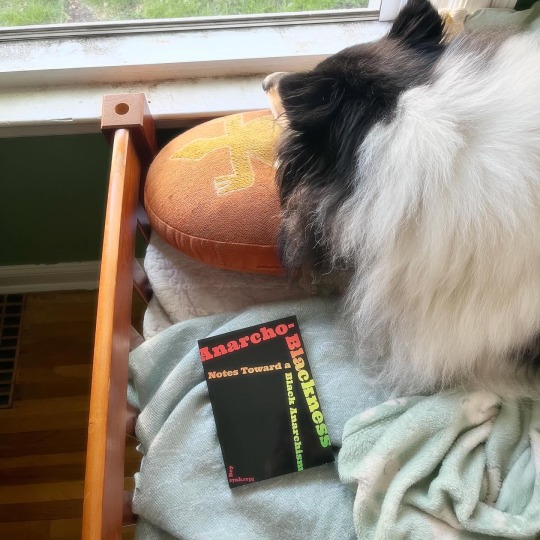
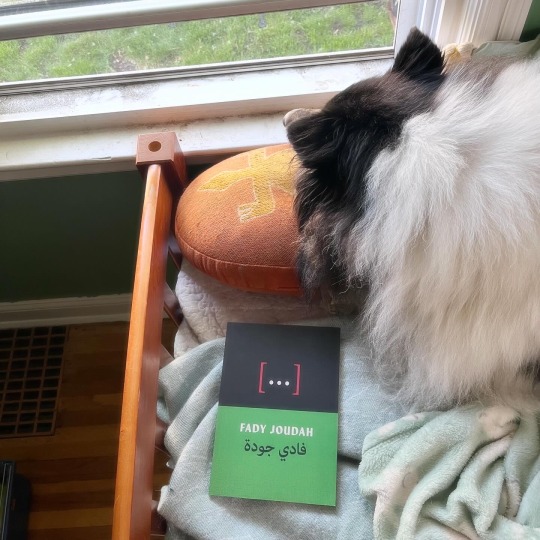
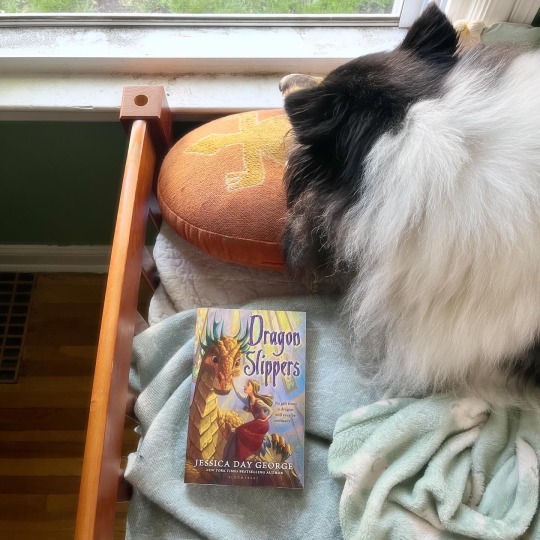
🌼 May Reading Wrap Up 🌼
In the last month I managed to read 11 books, bringing my yearly total up to 65 books! Here’s the list with my Top 3 having stars beside them:
🍄🟫 Mystical Mushrooms: Discover the Magic & Folklore of Fantastic Fungi by Aurora Kane
⭐️ [ . . . ] by Fady Joudah
🍓 Goblin Market by Christina Rossetti and Georgie McAusland
⭐️ Dragon Slippers by Jessica Day George
🐈⬛ Gobbolino the Witch’s Cat by Ursula Moray Williams
⭐️ Anarcho-Blackness: Notes Towards a Black Anarchism by Marquis Bey
🍄 The Adventures of a Brownie by Dinah Maria Mulock
🍵 The Tea Dragon Society by Kay O’Neill
🦎 Dorohedoro Vol. 2 by Q. Hayashida
🌸 The Flowers of Buffoonery by Osamu Dazai (trans. Sam Bett)
🎇 In the Forests of the Night by Amelia Atwater-Rhodes
What was your favorite thing to read?
#godzilla reads#books read in 2024#may reading#may reading wrap up#reading wrap up#book blog#booklr#bookworm#bookish#book list#reading
13 notes
·
View notes
Text

Precisamos dormir para nos encontrarmos. Sonho ou realidade! Prazer e sensualidade. Quando ao deitar . Fecho os olhos para te encontrar. Entro num mundo mágico só nosso. Onde não há desencontros. Meu Amado sempre pontual. Mais uma noite de amor. As mãos deslizando e acariciando meu corpo. Te abraço me aconchego nos teus braços. Afagas meu corpo. Noite de carícias e amor mais que perfeita. Nosso Pacto feito. Até quando nos encontrarmos de corpo e alma. Encontros não só nas madrugadas. Haverá explosão, Mar, Lua, Estrelas e Sol. Cúmplices da mais linda história de amor.
(Anna Maria David Rossetti)
53 notes
·
View notes
Text





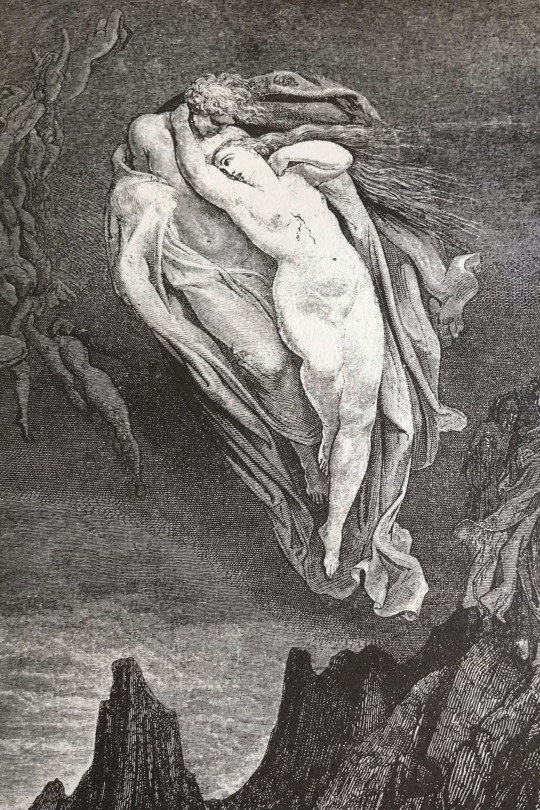


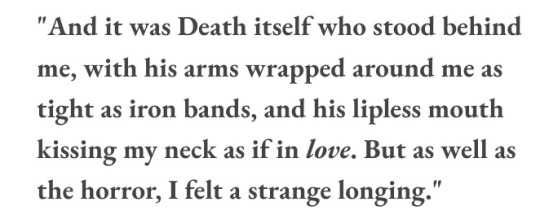
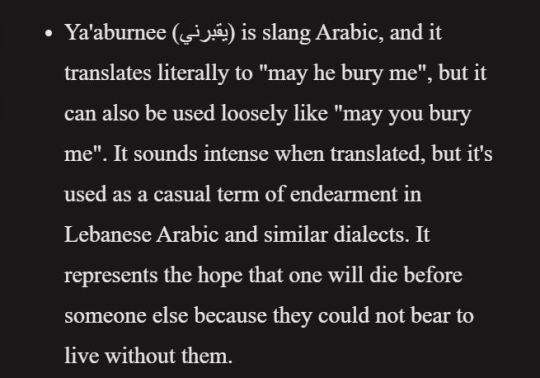
Oh, I just died in your arms tonight
Rainer Maria Rilke / Yrsa Daley-Ward / Marina Tsvetaeva / Franz Kafka / Lev St. Valentine / Dante Gabriel Rossetti / Pablo Neruda / David Levithan / Margaret Atwood
#web weaving#compilations#poetry#poem#art#quotes#love#webweave#webweaving#mine#death#franz kafka#painting#compilation#love poem#writing#aesthetic#dark academia
118 notes
·
View notes
Note
any poetry recommendations? tmwysl had me reading chevrefoil & i loved it, so i’d love to hear anything else you’ve got!
i'm so sorry to have kept u waiting!!! first i will recommend helen vendler's "exploring a poem" from her book poems, poets, poetry as a way to start thinking about reading and digesting poetry, in case that is of interest
to steal from my college poetry class, we must of course begin w poetry to apollo...
"archaic torso of apollo," rainer maria rilke
"homeric hymn to apollo," trans. rodney merrill
"apollo," elizabeth alexander
"plaster cast torso of apollo," rainer maria rilke
and assorted faves of mine!
"we lived happily during the war," ilya kaminsky
"the glass essay," anne carson
"oulipo," brandon som
"modern love," john keats
"where does such tenderness come from?" marina tsvetaeva
"who shall deliver me?" christina rossetti
"o taste and see," denise levertov
"whoso list to hunt," thomas wyatt
"poplar street," chen chen
"some years there exists a wanting..." claudia rankine
"little dog's rhapsody in the night," mary oliver
"the crack," denise levertov
astrophil and stella sonnet 49, phillip sidney
""hope" is the thing with feathers," emily dickinson
"initiation," rainer maria rilke
"a woman speaks," audre lorde
"the feeling of needing a pen," patricia lockwood
thank you for asking, this was so fun <3
10 notes
·
View notes
Text
Quest’anno sono sopravvissuto anche grazie a questo:
“Milano da Romantica a Scapigliata” Castello di Novara, 4.01.23
Dineo Seshee Bopape: “Born in the first light of the morning”, Hangar Pirelli Bicocca, 7.01.23
Bruce Nauman: “Neons, Corridors,Rooms”, Pirelli Hangar Bicocca, 7.01.23
Zerocalcare: “Ogni maledetto lunedì. Su due”, 12.01.23
“Grazie ragazzi” di Riccardo Milani, 15.01.23
“Mr & Mrs Clark. Ossie Clark and Celia Birtwell. Fashion and Prints 1965-74” Fondazione Sozzani, 21.01.23
“Ferito a morte” di Raffaele La Capria, Teatro Strehler, 22.01.23
“Indice, Storia dell’ “ di Dennis Duncan, 23.01.23
“Babylon” di Damien Chazelle, 29.01.23
“Dietro le quinte della polizia” di Georges Simenon, 10.02.23
“Zerocalcare dopo il botto” Fabbrica del Vapore Milano, 11.02.23
“La Casa della Memoria”, Milano, 11.02.23
“Gli spiriti dell’isola” di Martin McDonagh, 12.02.23
Matteo Osmieri e Alessia Binda, Concerti del conservatorio, 12.02.23
“ADI. Design Museum Milano, 18.02.23
Conservatorio 2
“Dietro le quinte della polizia” di Georges Simenon, 05.02.23
“Laggiù qualcuno mi ama” di Mario Martone, 19.02.23
“Quaderni ucraini”, 20.02.23
“Tessiture di sogno” di W.G. Sebald, 25.02.23
“La Maria Brasca” di Giovanni Testori, Teatro Parenti, 25.02.23
“Empire of Light” di Sam Mendez, 05.03.23
“Anatomia di un suicidio” di Alice Birch, Teatro Grassi, 12.03.23
“Romeo e Giulietta” di William Shakespeare, regia di Mario Martone, Teatro Strehler, 13.03.23
“Ho visto cose” di Mario Finotti, Galleria Giannoni, 18.03.23
“La moda giusta” di Marta D. Riezu,18.03.23
“Everything wehere all at once” di Daniel Kwan e Daniel Scheinert, 25.03.23
“Dal cucchiaio alla città” di Ugo La Pietra
“V13” di Emmenuele Carrère 02.04.23
“Fondazione Angelo Bozzola”, Galliare, 01.04.23
“Eloisa Manera”, Piccolo Coccia, 03.04.23
“Quando” di Walter Veltroni, 04.04.23
“Il ritorno di Casanova” di Gabriele Salvatores, 10.04.23
“Air. La storia del grande salto” di Ben Affleck, 09.04.23
“A Sound a Million Shape” di Alessia Obino, NJ Weekender Spring Edition, 15.04.33
“Ahmed” Pat Thomas, NJ Weekender Spring Edition, 15.04.23
Marc Ribot, NJ Weekender Spring Edition, 15.04.23
Al Doum & The Faryds, NJ Weekender Spring Edition, 16.04.23
Rhabdomantic Orchestra, NJ Weekender Spring Edition, 16.04.23
“Design Week Fuorisalone”, Milano, 18.04.23
“Augusto Betti artista+designer”, Fondazione Sozzani, 18.04.23
“Design Week-Fuorisalone: Alcova”, Ex mattatoio Milano, 22.04.23
“La La Lambro” di Maurizio Milani, 20.04.23
“Il sol dell’avvenire” di Nanni Moretti, 25.04.23
“Mon crime” di François Ozon, 30.04.23
“La quattordicesima notte del tempo ordinario” di Pupi Avati, 30.04.23
“Fra antropologia e storia dell’arte” di Bay Warburg, 07.05.23
“Cere anatomiche. La Specola di Firenze. David Ceonenberg”, Fondazione Prada, 13.05.23
“Housing Concert Piano City Milano: Bas Bulteed”, da Corrado Beldì, 21.05.23
Yuri Ancarani: “Lasciate stare i sogni” Pac Milano, 21.05.23
“Rapito” di Marco Bellocchio, 28.05.23
Luciano Rossetti: “Vent’anni di Novara Jazz”, 01.06.23
“Satoyama Quartet”, Nòva, Novara Jazz 2023, 01.06.23
Caterina Palazzi e Sudoku Killer, Nòva, Novara Jazz, 01.06.23
“Emong”, Fara Novarese, Novara Jazz, 02.06.23
Sebi Tramontana solo, Chiesa di San Pietro Barengo, Novara Jazz, 02.06.23
“Istant Song”, Castello di Barengo, Novara Jazz, 02.06.23
“Transatlantic” Michele Dal Lago e Icaro Gatti, Teatro di Tornaco, Novara Jazz, 03.06.23
Antonello Salis e Italo Satta, Villa Caccia Romagnano Sesia, Novarara Jazz, 04.06.23
“Insulæ Songs” Villa Caccia Romagnano Sesia, Novara Jazz, 04.06.23
Anais Drago, “Terre ballerine”, Villa Caccia”, Maggiora, Novarajazz 2023, 04.06.23
“Church of sound: Alina Bzhezhiska Quartet”, Basilica di San Gaudenzio, Novara Jazz, 04.06.23
Chet Beker, Vita e musica” con Francesco Martinelli, Castello, Novara Jazz, 08.06.23
“EABS meets Jaubi” Broletto, Novara jazz, 09.06.23
Francesco Simeti, “Pan di zucchero”, Palazzo Faraggiana, 10.06.23
Pasquale Mirra in solo, Palazzo Faraggiana, 09.06.23
“Flat Earth Society Orchestra” Broletto Novara Jazz 09.06.23
“TUN Torino Unlimited Noise” Broletto Novara Jazz, 09.06.23
Nicole Mitchell solo Palazzo Bellini, Novara Jazz, 10.06.23
Angelica Sanchez solo, Palazzo Bellini, Novara Jazz, 10.06.23
Damon Locks & Rob Mazurek, “New Future City Radio” Giardino Palazzo Natta, Novara Jazz, 10.06.23
“Mitelli Trio” e Joe McPhee, Castello, Novara Jazz, 10.06.23
Rob Mazurek e “Exploding Star Orchestra”, Broletto Novara Jazz, 10.06.23
Veryan Weston solo. Organo San Giovanni Decollato, Novara Jazz, 11.06.23
Adam Pultz-Melbye solo, Galleria Giannoni, Novara Jazz 11.06.23
Joe McPhee solo, Chiesa del carmine, Novara Jazz, 11.06.23
"Mitelli Avery Flaten Trio", Sovrintendenza, Novara Jazz, 11.06.23
"Chicago/Sao Paulo Undeground", Canonica del Duomo, Novara jazz, 11.06.23
BCUC-BANTU Continua Uhuru Consciousness, Broletto, Novara Jazz, 11.06.23
Gian Maria Tosatti “NOw/here”, Pirelli Hangar Bicocca, 17.06.23
Ann Veronica Janssen “Grand Bal” Pirelli Hangar Bicocca, 17.06.23
“Emily” di Frances O’Connor, 24.06.23
Dora Birnbaum, “Revolutionary Acts”, Osservatorio Prada, 01.07.23
Kris Ruhs “Figuratives”, Fondazione Sozzani, 01.07.23
Kris Ruhs , “Resonances”, Fondazione Sozzani, 01.07.23
Quntin Tarantino, “Cinema speculation”, 08.07.23
Nikolaj Achultz, “Mal di terra”, 18.07.23
Julien Green, “Parigi”, 25.07.23
“Assedine Alaïa, Arthur Elgort. En liberté. Fondation Alaïa, Parigi, 19.08.23
“Voyages en Noir et Blanc”, Galerie Bigaignon, Parigi, 19.08.23
“Basquiat X Warhol” Fondation Vuitton, Parigi 20.08.23
“Naples à Paris”, Louvre, Parigi, 21.08.23
“Aux origines de l’image sacrée”, Louvre, Parigi 20.08.23
“Frank Horvat, Paris, le monde, la mode” Jeu de Paume, Parigi 20.08.23
“Johan Van Der Keuken, Le rytme des Images” Jeu de Paume, Parigi, 20.08.23
“Annette en plus infinitement”, Fondation Annette e Alberto Giacometti Parigi, 21.08.23
“Ron Mueck”, Fondation Cartier, Parigi, 21.08.23
“Moï Ver”, Centre Pompidou, Parigi, 22.08.23
“Lynne Coehn et Marina Gradonneix, Laboratoires/Observatoires” Centre Pompidou Parigi, 22.08.23
“Serge Gainsbourg, Le mot exacte” Centre Pompidou, Parigi, 22.08.23
“Surréalisme au féminin?” Musée de Montmartre, Parigi, 23.08.23
“Over the Rainbow”, Centre Pompidou, Parigi, 24.08.23
“Avant l’Orage”, Bourse de Commerce Parigi, 25.08.23
“Accro-chat-ge” Musée d’Orsay Parigi, 25.08.23
“On ne peut vivre qu’à Paris”, di Emil Cioran e Patrice Reytier,29.08.23
“Oppenheimer” di Christopher Nolan, 03.09.23
“Manodopera” di Alain Ughetto, 08.09.23
“Un homme heureux” di Cioran-Reytier, 10.09.23
“Pepito principe del jazz” di Marco Molendini, 15.09.23
“Collettivo trifoglio-Iride” con Marte Bellu”, Nu Arts and Community, 21.09.23
“Blow Up Percussion” con Vittorio Montalti, Nu Arts and Community, 21.09.23
“Pleasure Garden: A listening Garden” Nu Arts and Community, 22.09.23
“Il Bosco che non c’è/ Nerverwood” con Antonella Cirigliano, Nu Arts and Community, 22.09.23
“Niccolò Baraggioli” vernissage, Nu Arts and Community, 22.09.23
“Umberto Orsini racconta Novara” Nu Arts and Community 23.09.23
“SaxFor Tone”, Nu Arts and Community, 23.09.23
“DNA” di Dennis Kelly, Collettivo Hangar, regia di Andrea Gattinoni, 23.09.23
“State Petals” con Ljuba Bergamelli e Zeno Baldi, 23.09.23
“Puppets Jazz” con Enrico Intra, Compagnia Colla e Civici Corsi di Jazz di Milano, 23.09.23
"Isole" di Gavin Francis, 30.09.23
"Il barone rampante" da Italo Calvino, con Stefano Massini, Teatro Grassi, 01.10.23
"Asteroid City"di Wes Anderson, 07.10.23
"Grand Hotel" di Roman Polanski, 8.10.23
"Over the Rainbow" (catalogo mostra), 10.10.23
"The Killers of the Flower Moon" di Martin Scorsese, 22.10.23
“Thao Nguyen Phan: Reincarnation of Shadows”. Pirelli Hangar Bicocca, 28.10.23
“James Lee Byars” Pirelli Hangar Bicocca, 28.10.23
“E in Deutsches Requiem” Basilica di San Gaudenzio, 29.10.23
“C’è ancora domani” di Paola Cortellesi, 1.11.23
“Händel, Bononcini” Novarien Trumpetes Ensemble, San Gaudenzio, 5.11.23
“Memorie di un baro” di Sacha Guitry, 7.11.23
“Sinfonia n. 4 di Schubert e Quattro Pezzi Sacri di Giuseppe Verdi” Teatro alla Scala, 11.11.23
“Max Vaduku, Through her Eyes” Gallerie d’Italia Milano, 25.11.23
“Maria Callas: ritratto” Gallerie d’Italia, 26.11.23
“She's Analog", e Adele Altro, NJ Weekender, 12.11.23
Daniela Pes, Nj Weekender, 12.11.22
“The Old Oak” di Ken Loach, 18.11.23
“Lou Reed, Re di New York” di Will Hermès, 18.11.23
“Argentina. Quel che la notte racconta al giorno”, Pac Milano, 26.11.23
“La pulce nell’orecchio” di Georges Feydeau, 26.11.23
“100 domeniche” di Antonio Albanese,02.12.23
“Coup de chance” di Woody Allen, 08.12.23
“Boldini, De Nittis et les italiens de Paris”, 09.12.23
“Trilogia della città di K.” di Àgota Kristof. Teatro Studio Melato Milano, 17.12.33
“One life” di James Hawes, 23.12.23
“Foglie al vento” di Aki Kaurismäki”, 30.12.23
Buon 2024
5 notes
·
View notes
Text
saw that a few other people also wanted the sources so i did my best to find them :) girls contain multitudes, heather o'neill / king, florence + the machine / ? / In the Dream House, Carmen Maria Machado / ? / cassandra, florence + the machine / haunted womenhood, ruth franklin (i think) / crush, richard siken / ? / a womans beauty, susan sontag / a vision of fiammetta, dante gabriel rossetti / stop me, natalia kills / fury, yevgeny yevtushenko

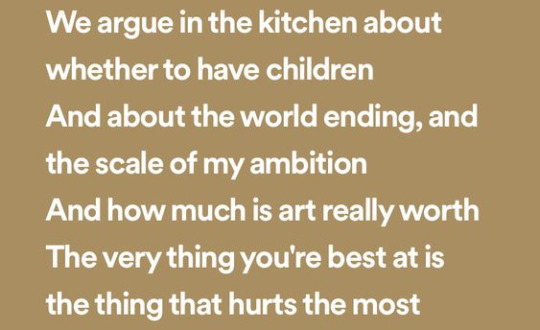
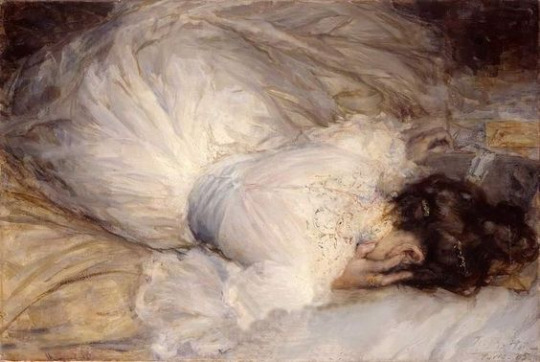

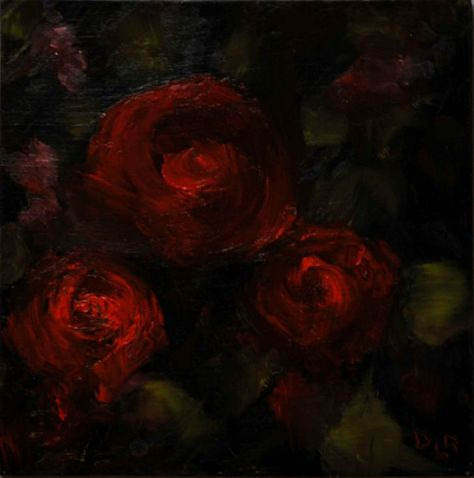
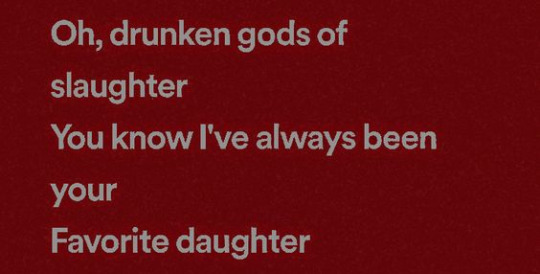

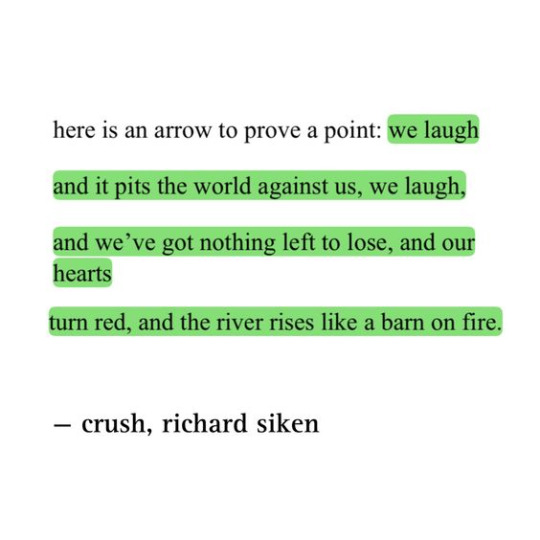
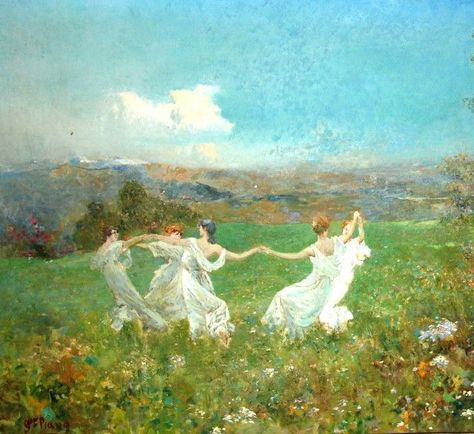
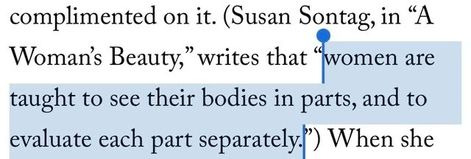
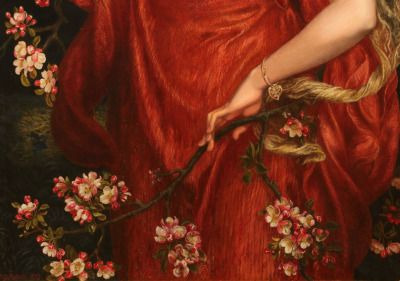
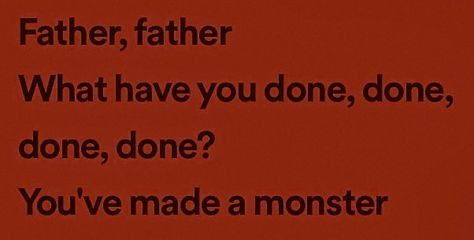

a girl of fear, a woman of anger— look how we've grown
13K notes
·
View notes
Text

Reggio Emilia - Sala del Tricolore - 1796
1452: Borso d’Este von Ferrara ernennt zum Herzog von Modena und Reggio. Maler wie Cosmè Tura, Francesco del Cossa und Ercole de’ Roberti waren am Este-Hof aktiv.
1470: Die Fresken im Palazzo Schifanoia mit astrologischen Themen sind ein typisches Werk der ferraresischen Schule. Ercole de Roberti war ein typischer Maler der Renaissance mit ordentlichen Zeichnungen und klaren Farben, während Cosmè Tura als Vertreter des dramatischen Stils mit bizarren Figuren gilt. Die Darstellung des Monats September von Cosmè Tura kombiniert mythologische und astrologische Motive (Vulkan) mit Turas charakteristischem dramatischen Stil, reichhaltige Ornamente, metallische Farben
1471: Ercole I. d’Este. Addizione Erculea in Ferrara mit Palazzo Diamanti (Biagio Rossetti), ein Meisterwerk der Renaissance-Architektur, dessen Fassade mit einer Diamantmuster-Steinverkleidung versehen ist. Förderung von Künstlern wie Piero della Francesca und Ludovico Ariosto. Isabella d’Este war die Ehefrau von Francesco II. Gonzaga, Herzog von Mantua, und Mutter von Federico. Sie war eine der bedeutendsten Adligen der Renaissance.
1474: Ludovico Ariosto wurde in Reggio geboren. Sein Stil gilt als typisch für die Renaissance, geprägt von Fantasie und der Fähigkeit, erzählerisch komplexe Themen zu behandeln. Er greift höfische, ritterliche Motive des Mittelalters auf und verbindet sie mit humanistischen Idealen. Er vermischte traditionelle Ritterthemen mit Elementen von Ironie, Humor und Fantasie, was einen Bruch mit der ernsten und idealistischen Darstellung früherer Epen darstellt. Während Autoren wie Dante moralische und religiöse Botschaften in den Vordergrund stellten, konzentrierte sich Ariosto auf Unterhaltung und die Kunst des Geschichtenerzählens.
1478: Pazzi-Verschwörung
1481: Santa Maria in Porto von Ercole de’ Roberti
1490: Isabella d’Este (Tochter von Ercole I.) heiratete Francesco II. Gonzaga, den Herzog von Mantua.
1494: Durch die Unterstützung in 1494 von Karl VIII. von Frankreich konnte Ercole I d’Este seine Unabhängigkeit sichern und seine Stellung in Norditalien stärken.
1502: Alfonso d’Este verheiratet mit Lucrezia Borgia, was die politische Macht der Este stärkt.
1505: Alfonso I. d’Este Herzog. Verteidigt Ferrara erfolgreich gegen den Papst und Frankreich während der Italienischen Kriege. In späteren Phasen der Italienischen Kriege (1520er Jahre) unterstützte Alfonso Karl V., Kaiser des Heiligen Römischen Reiches, gegen Frankreich. Diese Allianz sicherte Ferrara langfristig ab. Er war Freund mit Giovanni Maria Boiardo und Ludovico Ariosto der widmete dem Orlando Furioso ihren Bruder, der Kardinal Ippolito I d’Este.
1512: Schlacht von Ravenna zwischen Alfonso I. d’Este und Papst Julius II.
1519: Nach dem Tod Herzogs von Mantua, Isabella d’Este übernahm die Regentschaft für ihren minderjährigen Sohn Federico II. Gonzaga und sicherte die Stabilität des Herzogtums. Sie sammelte antike Skulpturen, Schmuck, Manuskripte und ließ zahlreiche Kunstwerke für ihre berühmte Studiolo (ein privates Kunstkabinett) anfertigen.
1526: Giovanni delle Bande Nere starb während des Krieges zwischen Kaiser Karl V. und den Papstum. Er wurde durch eine Kanonenkugel verwundet, eine Waffe der neuen Artillerie, und erlag später seinen Verletzungen. Die kaiserliche Armee, die später 1527 den Sacco di Roma ausführen sollte, wurde von Alfonso I. d’Este und Federico II. Gonzaga unterstützt.
1534: Ercole II d’Este
1559: Alfonso II. d’Este. Alfonso II. d’Este heiratete die Tochter von Cosimo I. de’ Medici, um die Allianz zwischen den beiden Familien zu stärken. Doch sie hatten keinen Sohn, und schließlich fiel Ferrara an den Kirchenstaat.
1572: Der Kardinal Ippolito II d’Este ließ die Villa d’Este bei Tivoli erbauen und weihte sie ein
1598: Cesare d’Este. Ferrara fällt an den Kirchenstaat. Die Este verlegen ihren Herrschaftssitz nach Modena und Reggio
1614 - 1648: Die Carracci spielten eine indirekte Rolle in der Dekoration der Basilica della Ghiara, einem wichtigen religiösen und künstlerischen Zentrum in Reggio Emilia. Die Carracci perfektionierten die Technik der Quadratur, bei der illusionistische Architekturelemente in die Fresken integriert wurden, um die Illusion von räumlicher Tiefe zu erzeugen. Michelangelo und Raffael gelten als Höhepunkte der Renaissance. Ihre Stile wurden von späteren Malern wie Caravaggio und den Carracci weiterentwickelt. Der Erste (Caravaggio) übernahm den dynamischen Ansatz Michelangelos, während die Zweiten (die Carracci) den Naturalismus Raffaels aufgriffen. Giulio Romano ein Hauptschüler Raffaels, aber er war für seine monumentalen Fresken und dekorativen Innovationen bekannt.
1621: Francesco I. d’Este. Gleich zu Beginn seiner Herrschaft sah er sich mit der schweren Pestepidemie von 1630–1631 konfrontiert, die einen Großteil der Bevölkerung Modenas dahinraffte. Francesco führte mehrere militärische Kampagnen durch, darunter die Invasion des Herzogtums Parma während des Dreißigjährigen Krieges. Er förderte die kulturelle Entwicklung seines Herzogtums, indem er bedeutende Bauprojekte wie den Herzogspalast in Modena initiierte (1634) und Kunstwerke von Künstlern wie Gian Lorenzo Bernini und Diego Velázquez in Auftrag gab.
1631: Ehe von Francesco I. d’Este, Herzog von Modena und Reggio, mit Maria Farnese, Tochter von Ranuccio I. Farnese, Herzog von Parma und Piacenza. Die Farnese begannen ihre Geschichte als Soldaten und Verwalter im Dienst des Papsttums, bis Alessandro Farnese im Jahr 1534 zum Papst gewählt wurde und den Namen Paul III. annahm. Während seines Pontifikats machte er seinen Neffen Pier Luigi Farnese im Jahr 1545 zum Herzog von Parma und Piacenza. Später wurde Herzog Alessandro Farnese, ein Nachkomme der Familie, Heerführer in Flandern im Dienst von Philipp II. von Spanien.
1635: Während des Dreißigjährigen Krieges (1618–1648) war Norditalien ein Schauplatz regionaler und internationaler Konflikte. Francesco I. führte Truppen gegen das Herzogtum Savoyen-Piemont, das sich auf die Seite Frankreichs gestellt hatte.
1695: Rinaldo d’Este
1741: Francesco III. d’Este. Bau des Herzogspalastes in Modena. Im Jahr 1765 ernannte Maria Theresia von Österreich Francesco III. d’Este zum Herrn von Varese, wo er die Gärten anlegen ließ.
1796: Im Jahr 1796, kurz bevor Napoleon in Mailand einmarschierte, floh Herzog Ercole III. von Modena nach Venedig. In dieser Zeit wurde die Reggiana Republik gegründet, deren wichtigstes Ereignis die Schlacht von Montechiarugolo war, bei der die Bürger von Reggio die Österreicher besiegten.” Das Herzogtum wird später Teil der Cispadanischen Republik.
1814: Francesco IV. von Habsburg-Este. Nach dem Wiener Kongress erhalten die Este-Modena ihre Herrschaft zurück.
1831: Francesco IV. hatte zunächst versprochen, die Anliegen der Carbonari zu unterstützen, stellte sich jedoch letztlich als ein reaktionärer Herrscher heraus. Ciro Menotti, ein führender Kopf der revolutionären Bewegung, wurde inhaftiert und 1831 hingerichtet.
1859: Francesco V. von Habsburg-Este. Modena wird in das Königreich Sardinien eingegliedert und später Teil des vereinten Königreichs Italien.
0 notes
